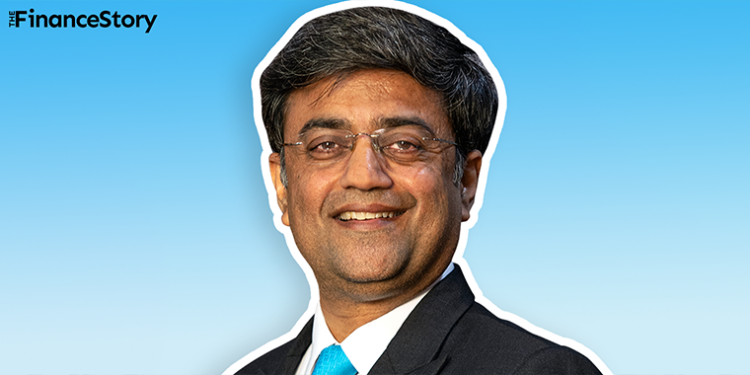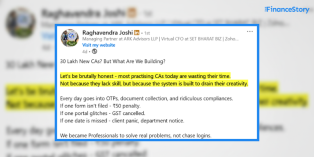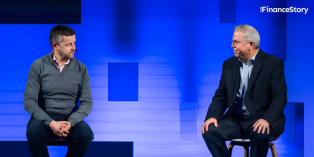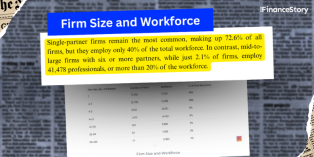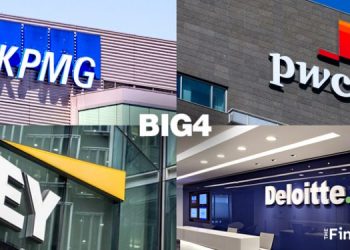- Hi, I am Aseem Dhru, a Chartered Accountant (CA) and MD & CEO at SBFC Finance Ltd, an NBFC helping small Indian businesses.
- I joined HDFC Bank when it was just a startup.
- There was never a dull moment at HDFC Bank, hence I did not need to think about shifting companies.
- But the entrepreneurial bug eventually bit me, and after 5 years of contemplating, I leaped in my 40s.
Back story
Generally, most people are not very clear about what they want to do in life. I was among those people.
It was bound to happen, as before 1992 in India, there were only a few private sector jobs with limited career options.
My priority was to go to the US and pursue an MBA, but our financial condition did not allow that to happen.
I had already completed my Cost Accountancy along with my graduation, so the option was to do either Chartered Accountancy or become a Company Secretary. The former seemed like a befitting option and that’s how I started my CA journey.
Then the miracle happened; the economic reform of 1991 occurred.
I qualified as a CA in 1994, and as luck would have it, the financial sector opened up in India.
By 1995 a lot of the sectors matured, and private sector banks were given licenses. All in all, now my career prospects looked promising.
But again came the big question What Now?
Joining HDFC Bank in 1997…when it was a Startup
When you are in your 20s, you have a mixture of hopes, dreams, ambitions, fears, and worries. With no clarity about my career, it was the same with me.
All I wanted was to get into a good organization where I could learn something and then grow. It was simple for me.
As a fresher I got two job offers; one was from Grindlays Bank and another from Citi Bank. Both international banks were based in Mumbai – the financial capital of India.
Sadly, I was offered a role in the finance team and I was clear that I didn’t want to sit behind a desk and count the money that other people made. I want to be somewhere where I make the money.
I refused the offer and returned to my home town Ahmedabad.
Then an offer came from Anagram Finance, a securities company. I had already said ‘no’ to two amazing offers, so I took up this job!
The stint at Anagram helped me understand how the corporate world works and what are its requirements.
In 1997, after three years at Anagram, I was offered a role at HDFC Bank.
At that time not a single foreign bank was ready to join us, they said, ‘HDFC Bank who? We are the big foreign banks and we are not interested in joining the bank.’
My dad was also a banker at the Bank of Baroda and he was very happy that I got the job offer from a bank. In his eyes, bankers were very respectable people, so I thought it would be a good idea to switch to banking.
I joined the bank as an officer, which was the lowest grade that the bank had. As the first retail asset employee of the bank, I was tasked to launch retail assets for the bank.
An opportunity of a lifetime! otherwise who would trust a 26-year-old kid to launch retail assets for a bank?
From that point in time, I lived, breathed, and slept in the bank.
I enjoyed building new businesses in the bank, hence every time something new came up in the lending space, Mr. Aditya Puri, (previous MD at HDFC) was kind enough to say, ‘Why don’t you launch this?’ ‘Why don’t you launch that?’
The good part about the bank was, the amazing, Mr Puri, who could see the future with great certainty, and he told us what to do and what not to do.
I was excelling in my career.
Starting something of my own in my late 40s…
If you are having a great time doing what you are doing, the bank is taking great care of you, and the stock option took great care of you in terms of financial benefits, there is no reason for you to explore something outside of the organization.
Even though several offers were pouring in! I loved what I was doing and I was not stagnated. 20 years went by.
Fast forward to 2017, one day during our conversations Mr. Deepak Parekh said, “How does one contribute back to the nation? What the country needs are jobs. But people who can create jobs are doing jobs themselves. Then aren’t they doing the nation a disservice?”
Those wise words spoken by him stayed somewhere in my mind.
I thought to myself, “I was a lucky recipient of a job at HDFC bank and enjoyed many financial benefits. Maybe it is worthwhile to try and create another institution, which can create jobs for people and add value to other people’s lives over a long period.”
When an idea comes to you, then you argue logically and it goes away, it’s fine. But if it keeps coming back to you then you’ve got to act, you cannot keep postponing it. That happened to me. The thought of doing something was always there.
But then the question of age came. I was in my 40s, so would it be a wise decision to leave a senior position at HDFC?
That is when I recalled the story of the Late H T Parekh. After retiring as a Chairman of ICICI, he went on to build HDFC Ltd. at the age of 65. Today it has become a market leader in banking, housing finance, life and general insurance, education loans, and more.
I was extremely motivated by his story and decided to leap at last.
Creating an NBFC… to help small businesses
There are over 64 million small businesses in India.
They are either funded by trade finance or by unorganized market borrowings. We thought this was a problem worth solving.
We were certain from the start that we would build an institution, not a business.
Keeping that in mind we created SBFC in 2017, a new-age financial services institution focused on providing credit to small businesses and consumers.
The whole concept of SBFC is to provide credit to small businesses located in tier 2, and tier 3 cities in India.
When we were building the institution, things like governance, and standards, not depending on people but depending more on processes, getting the right technology, the right unit economics, and the right business model in place, became the building blocks.
Each individual in our team at SBFC is handpicked. When we saw that there was a similarity in our work culture, and they understood what we were doing, we got them on board.
Today we are a strong team of 2500 and growing.
We have 135 branches across 16 states in India, and we intend to get even deeper into every district in these particular states.
Challenges I face as a CEO, almost every day
Building a business for a bank and running your own business daily are very different, in terms of challenges.
For instance, when we started SBFC we didn’t consider the IL&FS crisis, the Yes Bank crisis, the loan default of Reliance Capital, and how it could negatively affect the lending ecosystem.
To top it all off Covid and its 3 waves hit us. It did pose different levels of challenges, but we pulled through.
In the environment that we work in, there might come some regulatory changes, audit-related issues, or perhaps demands from our investors.
Sometimes a certain technology fails to deliver what it was supposed to, and because of that, a project runs behind schedule.
As a CEO I am posed with problems like these every day, and I always have to solve them, no matter how difficult they are.
Then comes the responsibility of managing people. Team members might not get along, and I have to look after that.
I don’t fret about something that I can’t control. All I do is, make sure everybody walks in the same direction, at the same speed, and with the same level of joy.
In the face of challenges, I say to myself “Lage Raho Munnabhai.” (In English, keep on going)….
Signing off…
My whole career has been a story of accidents, albeit lucky accidents.
When I look back, CA was a wonderful thing that happened to me. The grounding in numbers, law, understanding the unity between law and finance, and statistics helped me a lot in my career.
Certain professionals are better in presentation skills and strategy but not so detail-oriented in terms of execution. In your career, especially in India execution is the area where the real need is. And you need to get it right.
Remember, many problems will emerge daily, and for most of us, our emotion takes over. Learn how to let the emotions slide and let your rational intellect say, ‘Okay this has happened. Now I have to find a way around it.’
The best way to build something is to keep at it.




